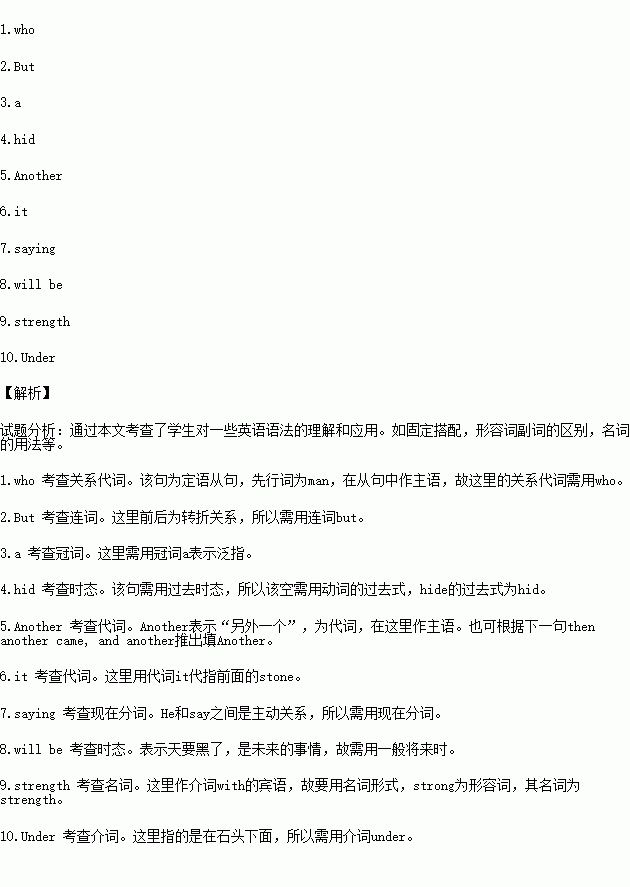题目内容
阅读下面材料,在空白处填入适当的内容(1个单词)或括号内单词的正确形式。
Once there lived a rich man __1.__ wanted to do something for the people of his town. _2.__ first he wanted to find out whether they deserved (值得) his help.
In the centre of the main road into the town, he placed __3.___ very large stone. Then he __4.____ (hide) behind a tree and waited. Soon an old man came along with his cow.
“Who put this stone in the centre of the road?” said the old man, but he did not try to remove the stone. Instead, with some difficulty he passed around the stone and continued on his way. __5.___ came along and did the same thing; then another came, and another. All of them complained about the stone but no one tried to remove __6.__. Late in the afternoon a young man came along. He saw the stone, ___7.___ (say) to himself: “The night ___8.__(be) very dark. Some neighbors will come along later in the dark and will fall against the stone.”
Then he began to move the stone. He pushed and pulled with all his ___9.____ (strong) to move it. How great was his surprise at last! __10.___ the stone, he found a bag of money.
 阅读快车系列答案
阅读快车系列答案
